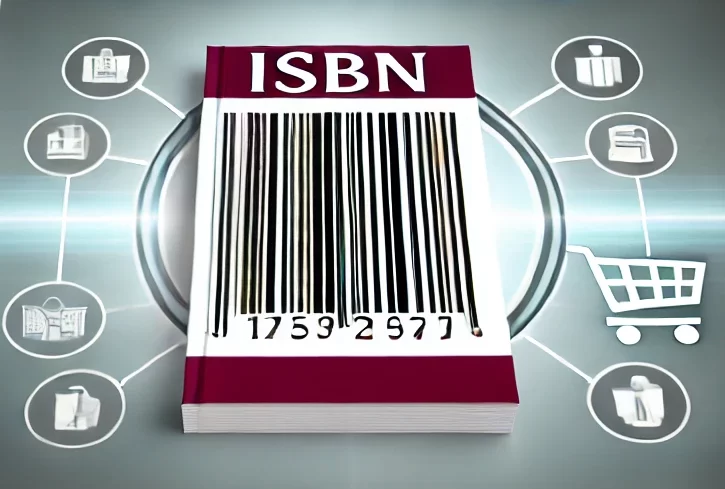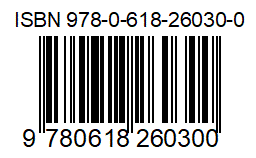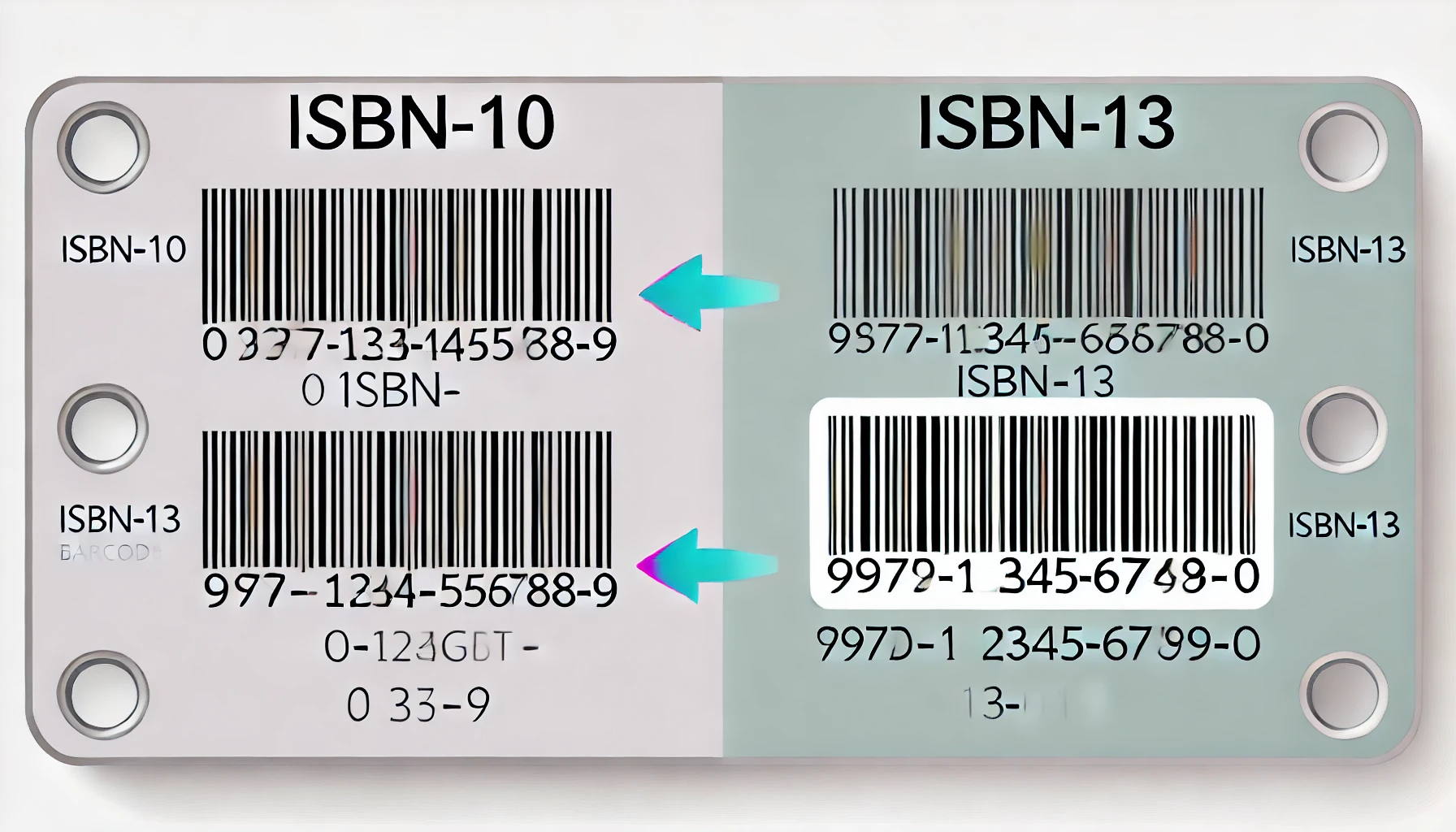The International Standard Book Number (ISBN) is a critical component in the world of books, providing a unique identifier for each edition and variation of a title. Since its inception in 1970, the ISBN Number system has played a pivotal role in simplifying the distribution, sale, and cataloging of books globally. Over the years, the system has evolved to adapt to the growing number of published works and technological advancements. This evolution is most notably marked by the transition from the ISBN-10 to the ISBN-13 format. Understanding the differences between these two formats, their specific uses, and the reasons behind this transition is essential for publishers, booksellers, librarians, and even readers.

Before exploring the distinctions between ISBN-10 and ISBN-13, it is important to understand what an ISBN is and why it is used. An ISBN is a unique numeric commercial book identifier assigned to each separate edition and variation of a publication. This unique identifier allows for efficient inventory management, facilitates the ordering and distribution processes, and aids in the cataloging of books in libraries and databases.
ISBN-10: The Original Format

The ISBN-10 format, introduced in 1970, was the standard for over three decades. It comprises 10 digits and is divided into four distinct parts, separated by hyphens. Each part has a specific function:
- Group Identifier: The first part, consisting of 1 to 5 digits, identifies the national, geographic, or language group participating in the ISBN system. For example, English-speaking countries are typically assigned group identifiers starting with ‘0’ or ‘1’.
- Publisher Code: The second part, ranging from 2 to 7 digits, identifies the specific publisher within the group. This code helps in pinpointing the exact publisher of a book.
- Title Identifier: The third part, consisting of 1 to 6 digits, uniquely identifies the specific edition and format of a title issued by the publisher.
- Check Digit: The final digit is a mathematically calculated check digit that verifies the validity of the ISBN. It is calculated using a modulus 11 algorithm.
An example of an ISBN-10 format would look like this: 0-123-45678-9.
ISBN-13: The Modern Standard

In January 2007, the ISBN-13 format was introduced to address the limitations of the ISBN-10 system. This format comprises 13 digits and is divided into five parts:
- Prefix Element: The first three digits are always 978 or 979, signifying the book industry within the global EAN (European Article Number) system.
- Group Identifier: Similar to the ISBN-10 format, this part identifies the national, geographic, or language group.
- Publisher Code: This segment identifies the publisher within the group.
- Title Identifier: This part uniquely identifies the specific edition and format of the title.
- Check Digit: The last digit is a check digit, calculated using a modulus 10 algorithm, which helps in verifying the accuracy of the ISBN.
An example of an ISBN-13 format would be: 978-0-123-45678-9.
Key Differences Between ISBN-10 and ISBN-13
- Length and Structure:
- ISBN-10: Consists of 10 digits and four parts.
- ISBN-13: Consists of 13 digits and five parts, including a 3-digit prefix.
- Validation and Check Digit Calculation:
- ISBN-10: The check digit is derived using a modulus 11 algorithm, where each digit is multiplied by a weight that decreases from 10 to 1.
- ISBN-13: The check digit is derived using a modulus 10 algorithm, where each digit is alternately multiplied by 1 and 3.
- Transition and Compatibility:
- ISBN-10: Was the exclusive format until 2007 but is still found in older publications and systems.
- ISBN-13: Introduced to ensure a sustainable numbering system and to align with the global EAN-13 barcode standard used for all retail products, making it universally applicable in the book industry.
The Transition to ISBN-13: Why It Happened
Several key factors drove the transition from ISBN-10 to ISBN-13:
- Exhaustion of ISBN-10 Combinations: With the rapid growth of the publishing industry, the 10-digit format was running out of unique identifiers.
- Global Compatibility: ISBN-13 aligns with the EAN-13 barcode standard, which is used globally for product identification. This alignment facilitates the easier integration of books into global retail and distribution systems.
- Improved Accuracy and Reliability: The ISBN-13’s check digit calculation is more robust, reducing errors in book identification.
Uses of ISBN-10 and ISBN-13
ISBN-10:
- Predominantly used for books published before 2007.
- Still found in older library catalogs and certain institutional databases.
- Some regional markets or specific niches continue to use ISBN-10 due to legacy systems.
ISBN-13:
- Mandatory for all new books published after January 1, 2007.
- Required for international book trade, ensuring books can be sold and tracked globally.
- Compatible with EAN-13 barcodes, facilitating easier scanning and inventory management in retail environments.
- Used in modern library systems, online bookstores, and digital platforms for better accuracy and integration.
How to Convert from ISBN-10 to ISBN-13
Converting an ISBN-10 to ISBN-13 is a straightforward process that involves adding a prefix and recalculating the check digit. The following step-by-step guide will help you convert an ISBN-10 to its ISBN-13 equivalent.
Step-by-Step Conversion Process
- Add the Prefix “978”: The ISBN-13 format includes a three-digit prefix to align with the EAN-13 barcode standard. For converting an ISBN-10 to ISBN-13, this prefix is always “978”. Append this prefix to the beginning of the ISBN-10.
For example, if the ISBN-10 is 0-123-45678-9, start with 978-0-123-45678.
- Remove the Original ISBN-10 Check Digit: The check digit is the last digit of the ISBN-10, and it will be replaced by a new check digit calculated for the ISBN-13 format.
Continuing with the example, remove the final digit 9 to get 978-0-123-45678.
- Recalculate the Check Digit for ISBN-13: The check digit for an ISBN-13 is calculated using the modulus 10 algorithm, which involves the following steps:
- Multiply each digit of the first 12 digits by alternating weights of 1 and 3.
- Sum these weighted products.
- Calculate the modulus 10 of the sum.
- Subtract the result from 10 to get the check digit. If the result is 10, the check digit is 0.
- Let’s go through these calculations with our example, 978-0-123-45678:
- Assign weights: 9×1, 7×3, 8×1, 0×3, 1×1, 2×3, 3×1, 4×3, 5×1, 6×3, 7×1, 8×3
- Perform multiplications: 9, 21, 8, 0, 1, 6, 3, 12, 5, 18, 7, 24
- Sum the results: 9 + 21 + 8 + 0 + 1 + 6 + 3 + 12 + 5 + 18 + 7 + 24 = 114
- Calculate modulus 10: 114 mod 10 = 4
- Subtract from 10: 10 – 4 = 6
- Therefore, the check digit for the ISBN-13 is 6.
- Combine the Digits: Combine the prefix, the original ISBN-10 digits (excluding the original check digit), and the new ISBN-13 check digit.
The final ISBN-13 for our example is 978-0-123-45678-6.
Example Conversion
Let’s take another example to illustrate the conversion process:
ISBN-10: 0-306-40615-2
- Add the Prefix: 978-0-306-40615
- Remove the Original Check Digit: 978-0-306-40615
- Calculate the New Check Digit:
- Assign weights: 9×1, 7×3, 8×1, 0×3, 3×1, 0×3, 6×1, 4×3, 0×1, 6×3, 1×1, 5×3
- Perform multiplications: 9, 21, 8, 0, 3, 0, 6, 12, 0, 18, 1, 15
- Sum the results: 9 + 21 + 8 + 0 + 3 + 0 + 6 + 12 + 0 + 18 + 1 + 15 = 93
- Calculate modulus 10: 93 mod 10 = 3
- Subtract from 10: 10 – 3 = 7
- Combine the Digits: The final ISBN-13 is 978-0-306-40615-7.
Converting an ISBN-10 to ISBN-13 involves adding a “978” prefix, removing the original check digit, recalculating a new check digit using the ISBN-13 modulus 10 algorithm, and then combining the components to form the final ISBN-13. This process ensures compatibility with global standards and supports the sustainable numbering system required by the growing book industry. Understanding how to perform this conversion is essential for publishers, booksellers, librarians, and others involved in book management and distribution.
Frequently Asked Questions (FAQs)
Q1: Can an ISBN-10 be converted to an ISBN-13?
Yes, an ISBN-10 can be converted to an ISBN-13 by adding the 978 prefix and recalculating the check digit using the ISBN-13 modulus 10 algorithm.
Q2: Are ISBN-10s still in use today?
While ISBN-10s are no longer assigned to new books, they are still used for older publications, and some systems and regions may still use Them for legacy reasons.
Q3: Why was the ISBN-13 format introduced?
The ISBN-13 format was introduced to expand the available number of unique identifiers, align with the global EAN-13 barcode standard, and improve the accuracy and reliability of book identification.
Q4: How can I identify if a book has an ISBN-10 or ISBN-13?
An ISBN-10 has 10 digits, while an ISBN-13 has 13, typically starting with 978 or 979. You can also examine the number’s structure and length.
Q5: Do e-books have ISBNs?
Yes, e-books are assigned ISBNs just like print editions.
Q6: Are ISBNs the same worldwide?
Yes, ISBNs are managed by the International ISBN Agency, ensuring they are unique and standardized globally. Each country or region has the authority to assign and manage ISBNs locally.
The ISBN (International Standard Book Number) is crucial when selling your book because it uniquely identifies your title, making it easier for bookstores, libraries, and online retailers to catalog and track sales. It also ensures that your book is easily discoverable by readers and helps with inventory management and distribution.
Conclusion
The evolution from ISBN-10 to ISBN-13 represents a significant advancement in the book industry’s efforts to keep pace with technological and global market changes. While the ISBN-10 format served the industry well for over three decades, the introduction of the ISBN-13 format ensured a more sustainable and globally compatible system for identifying books.
This transition accommodates the increasing number of published works and aligns with international standards, facilitating seamless integration into the global retail and distribution networks. Understanding the differences between these formats and their specific uses is crucial for anyone involved in publishing, distributing, or cataloging books. The ISBN system will remain a cornerstone of efficient and accurate book identification and management as the book industry evolves.






